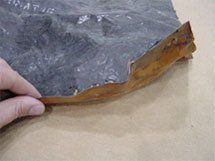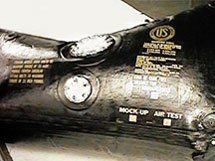Fuel Cell Basics
Things you need to know about fuel cells.
Things you need to know about fuel cells.
Fuel Cell Basics
Flexible fuel cells, or bladder cells (tanks) as they are sometimes called, are used in place of integral or metal tanks for safety and more effective fuel containment. In a survivable crash, these bladders absorb the impact and reduce
the chance of fire and inhibit explosions. Initially designed for the military training aircraft in the late 1930’s, flexible fuel cells have been used in a wide range of applications. They are currently found in light aircraft, helicopters,
commercial airliners, military aircraft, missiles, spacecraft, and more commonly in all levels of auto racing. Flexible fuel cells are more effective because they flex and bend in the airframe cavity, whereas integral or metal tanks are
susceptible to leakage, seeping and cracking as well as structural failure during an accident. Metal tanks and wet wings are the less safe, less expensive alternatives and are still found on a variety of aircraft.
Goodyear built the original civilian fuel cell. They called it a "Pliocel." The process of making a Pliocel was an early version of seamless multi-ply construction. This construction consisted of one to two layers of nylon woven fabric laminated with two to three layers of transparent nylon coatings. They were state-of-the-art in the early 40's and were installed in such planes as the Culver, Luscombe, Aeronca, Grumman and Sikorsky. Historically, they have been fairly resilient, however age, increased aromatic and chemical content in fuels, and the innate limitations of early technology have caused the Pliocels to become extremely brittle and begin to leak at flex points.
As synthetic rubbers such as Nitrile were developed, they gained widespread use in the petroleum industry and quickly became the dominant material for fuel cells in the 1940's. During World War II, the use of Nitrile greatly
increased due the demand for sealing tanks in fighters and bombers. Original Equipment manufacturers (OEM's) such as US Rubber, Uniroyal, Firestone, BF Goodrich and others have used Nitrile rubber almost exclusively.
Goodyear eventually abandoned the nylon Pliocel process in the mid 60's, choosing to use their own newly developed urethane polymers.
Fuel cells are an assembly of metal items (fittings) laminated or attached to polymers and polymer coated fabric materials. They are used in aircraft to hold fuel, oil, and alcohol/water mixtures. Each cell is designed and constructed
to suit the individual fluid it contains. Polymers, cements and other building materials are chosen based on their use, atmospheric conditions and chemical resistance. A cell wall may consist of up to several layers of one of these
materials and or a coated fabric such as nylon for structural support and puncture resistance. Most cells have an inner liner, a fabric structural support, and an outer protective layer. A cross section of a fuel cell wall construction
consists of a fuel resistant polymer (typically liquefied nylon, Neoprene, Buna-N / Nitrile or Urethane) laminated to a fabric substrate (typically polyester or nylon) which provides structural support and puncture resistance.
There are several methods of building or laying up a cell. All cells are built over either a permanent form or disposable corrugated cardboard form in one of the following methods. One-ply cells are laid up with a single ply of
polymer coated fabric sheet goods with (sometimes) clever overlap configurations to avoid seam leaks. Two-ply cells are laid up with two separate layers of sheet goods (an inner liner ply and separate coated fabric ply) with the seams
over lapping for increased sealing at seams and corners. This method is less problematic but can still be susceptible to channel leak issues. Both of these lay ups can be made with cured or uncured (green) material and then cold
cured or heat/pressure cured. There is also a coated lay-up method where the inner and outer layers are brush coated (or sprayed) over the form and structural support fabric. This creates a seamless cell basically eliminating
channel leak issues. The most superior method combines the best aspects of all of these methods. By using a combination of coatings and sheet goods with proper overlap, a seamless multi-ply cell can be produced. This method requires increased building time and material cost but far exceeds the other methods in quality, defect reduction, flexibility, and appearance.
In normal operating conditions, fuel cells have lasted from five to twenty-five years on average depending on the quality of the construction materials, manufacturing processes, workmanship, the quantity of aromatics in the fuel, the
lack of fuel for prolonged periods of time, and extreme climate conditions. Using proper techniques, most cells can be repaired and returned to service economically and with good longevity as long as the material is structurally sound. The longest lasting fuel cells so far have proven to be made from Buna–N (nitrile) rubber lasting an unbelievable seventy plus years.
However, with the advent of the new unleaded aviation fuels, fuel cell longevity will be changing. Fuel system materials are already changing. As tetraethyl lead is removed, increased amounts of aromatics will take its place.
These chemicals are very hard on existing materials especially the components that are over 20 years old. Most hoses, o-rings and seals have already been updated but fuel cells will need to be upgraded if they expect to last. We
have been working with the various new fuels for many years and have upgraded our materials and processes to meet the current and future demands. Since 2010, our cells have met the challenge with flying colors and are ready
for the future. Call Eagle Fuel Cells today!
Fuel Cell Information
Questions? Call today!
(800) 437-8732
SHIP TO US
Check our hours out!




Share On: